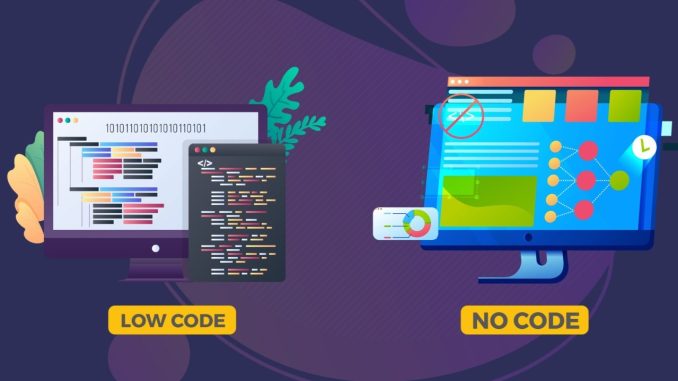
The emergence of no-code tools is reshaping how individuals and businesses approach software development, automation, and digital innovation. Traditionally, building applications or automating workflows required specialized programming knowledge, often limiting these capabilities to developers or IT professionals. No-code platforms challenge that paradigm by enabling users to create functional, scalable solutions through intuitive interfaces and drag-and-drop components. This shift is not just a technological evolution—it’s a democratization of digital creation that opens doors for entrepreneurs, marketers, analysts, and anyone with a problem to solve and an idea to test.
At its core, the no-code movement is about accessibility. By removing the barrier of coding, these tools empower users to build websites, mobile apps, databases, and automations without writing a single line of code. Platforms like Webflow, Airtable, Zapier, and Bubble have gained traction by offering powerful capabilities wrapped in user-friendly design. For example, a small business owner can use Webflow to design a professional website, integrate e-commerce features, and manage content—all without hiring a developer. Similarly, a marketing team can use Zapier to automate lead capture and email campaigns, streamlining operations and saving time.
The implications of this accessibility are far-reaching. For startups and small businesses, no-code tools reduce the cost and complexity of launching digital products. Instead of investing heavily in development resources, founders can prototype ideas, test user feedback, and iterate quickly. This agility is crucial in competitive markets, where speed and adaptability often determine success. No-code platforms also support scalability, allowing users to start with simple solutions and expand functionality as needs evolve. What begins as a basic form or dashboard can grow into a robust system that supports core business operations.
In larger organizations, no-code tools are driving a shift toward citizen development—where employees outside of IT contribute to digital innovation. This approach not only accelerates project timelines but also fosters a culture of empowerment and problem-solving. When teams can build their own tools, they’re more likely to experiment, collaborate, and take ownership of outcomes. For instance, a finance department might create a custom reporting dashboard using Airtable and Google Data Studio, reducing reliance on external developers and improving responsiveness to internal needs. The result is a more agile organization where technology adapts to users, not the other way around.
Education and training are also being transformed by no-code platforms. Students and professionals can learn to build apps, automate tasks, and manage data without formal coding instruction. This opens up new career paths and enhances digital literacy across disciplines. As no-code tools become more prevalent, understanding how to use them effectively becomes a valuable skill in its own right. Schools, bootcamps, and online courses are increasingly incorporating no-code into their curricula, preparing learners for a future where technical fluency includes both coding and no-coding competencies.
Despite their advantages, no-code tools are not without limitations. Complex applications with advanced logic, performance requirements, or custom integrations may still require traditional development. Security, scalability, and vendor lock-in are also considerations, especially for mission-critical systems. However, many platforms are addressing these concerns by offering hybrid models, where users can extend functionality with custom code or APIs. This flexibility allows organizations to balance ease of use with technical rigor, ensuring that no-code solutions remain viable as needs grow more sophisticated.
The rise of no-code also prompts a reevaluation of roles and workflows within organizations. As more people gain the ability to build and automate, the lines between business and technical functions begin to blur. Collaboration becomes more dynamic, with cross-functional teams co-creating solutions and iterating in real time. This shift requires new governance models, clear communication, and shared understanding of best practices. IT departments, rather than being gatekeepers, become enablers—providing guidance, oversight, and support to ensure that no-code initiatives align with broader strategic goals.
For individuals, the rise of no-code tools represents an opportunity to take control of digital projects and bring ideas to life. Whether you’re launching a side hustle, optimizing a workflow, or solving a problem in your community, no-code platforms offer the means to act without waiting for technical resources. This empowerment fosters creativity, experimentation, and entrepreneurship, allowing more people to participate in the digital economy. It also encourages a mindset of continuous learning, as users explore new tools, share insights, and refine their approaches.
Looking ahead, the no-code movement is likely to continue evolving, with platforms becoming more powerful, interoperable, and customizable. Integration with AI, machine learning, and data analytics will further expand what users can achieve without traditional coding. As these tools mature, they will not only complement existing development practices but also redefine how we think about building and managing technology. The future of digital creation is not limited to those who can code—it belongs to those who can imagine, design, and execute, regardless of their technical background.
In essence, the rise of no-code tools is a story of inclusion and innovation. It’s about lowering barriers, expanding possibilities, and enabling more people to shape the digital world. For businesses, it means faster development, greater agility, and broader participation. For individuals, it means turning ideas into reality with unprecedented ease. As the no-code ecosystem grows, its impact will be felt not just in how we build software, but in how we think about problem-solving, collaboration, and the role of technology in everyday life.